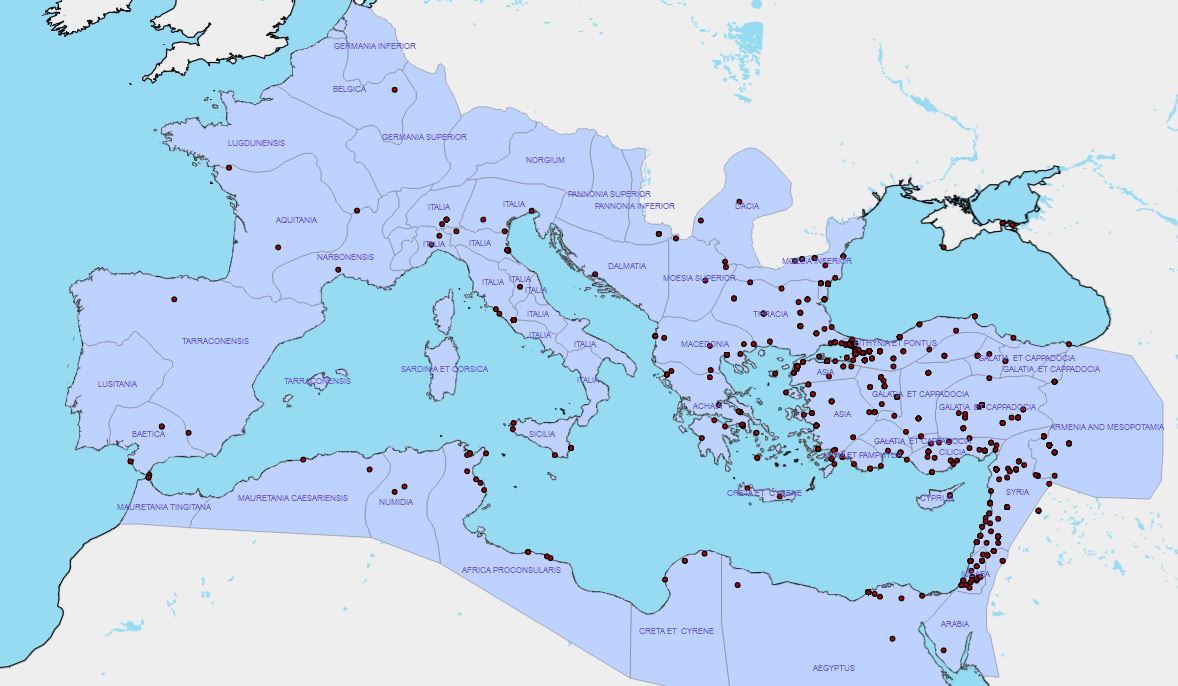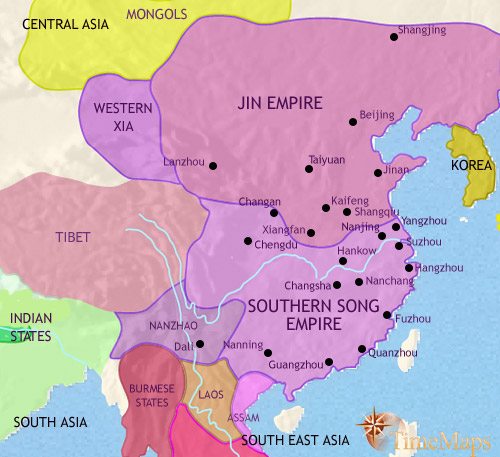
A little #ByzantineHistory and #DH thread.
One project this semester is returning to data & visuals students & I pulled from chronicle of Theophanes.
Potentially can show a lot.
My interest: how ninth-century Constantinople saw the space of #Roman history.
One project this semester is returning to data & visuals students & I pulled from chronicle of Theophanes.
Potentially can show a lot.
My interest: how ninth-century Constantinople saw the space of #Roman history.

Images all Jesse Simmons (superstar Res Assistant!).
This shows all cities/settlements in Chronicle of Theophanes.
One obvious thing (expected): East/West discrepancy.
One obvious thing (p'haps NOT expected): interest in Syria/Palestine over Greece!
This shows all cities/settlements in Chronicle of Theophanes.
One obvious thing (expected): East/West discrepancy.
One obvious thing (p'haps NOT expected): interest in Syria/Palestine over Greece!

We made the data sensitive to *when* (under what date) a city/settlement is mentioned.
Differentiates the "space" of different eras or emperors' reigns in the Chronicle.
Blue is "space" of Constantine's Rome (ca. 310-35)
Yellow is "space" of Irene & Nikephoros (ca. 780-810).

Differentiates the "space" of different eras or emperors' reigns in the Chronicle.
Blue is "space" of Constantine's Rome (ca. 310-35)
Yellow is "space" of Irene & Nikephoros (ca. 780-810).


I LOVE seeing the manifestation of the granularity (and vacancy) of places in the different regions of Asia Minor/Anatolia--"Rum".
This map shows all the cities/settlements in this region mentioned over the entire chronicle (AD 284-813) overlaid on a map of the Themata ca. 815.
This map shows all the cities/settlements in this region mentioned over the entire chronicle (AD 284-813) overlaid on a map of the Themata ca. 815.

Anyway, all of this is just to remind myself that I need to make progress on the project this semester.
Here is what my amazing team of undergrad researchers wrote about the project, just before the pandemic hit in March 2020.
travelerslab.research.wesleyan.edu/2020/03/27/rew…
Here is what my amazing team of undergrad researchers wrote about the project, just before the pandemic hit in March 2020.
travelerslab.research.wesleyan.edu/2020/03/27/rew…
ALSO: a caveat!
Part of what needs to be worked on (unto the ages of ages) is data cleaning.
Those who are in the know will be able to spot places on here that are NOT in the right spot!!
Part of what needs to be worked on (unto the ages of ages) is data cleaning.
Those who are in the know will be able to spot places on here that are NOT in the right spot!!
OK, a final gratuitous pearl.
The group's favorite site to finally decide WAS a location and then PLACE as a location was "the Oak, which is now called Rufinianae (Ῥουφινιαναι)" where Theophilos plotted against John Chrysostom in 404/405.
The group's favorite site to finally decide WAS a location and then PLACE as a location was "the Oak, which is now called Rufinianae (Ῥουφινιαναι)" where Theophilos plotted against John Chrysostom in 404/405.

• • •
Missing some Tweet in this thread? You can try to
force a refresh







